Filipino Restaurants
EXPLORING
IN TORONTO
I visited Max's with my mother, who emigrated from the Philippines with my father and brothers in 1989. I thought it was a good idea to go with her because I wanted to see if there was an element of nostalgia tied to this restaurant, since it originated from the Philippines. This location is the first branch to open in Canada, and there is another location opening in Scarborough.
Located at 1520 Steeles Avenue West, it is within a plaza at the southern border of Vaughan. The plaza also has an Eastern European restaurant, a Value Village, a donation centre, a doctor's office, and a Language Instruction for Newcomers to Canada (LINC) centre for immigrants.


The exterior stays true to the restaurants found in the Philippines and elsewhere in the world. Upon searching on Google, I found that instead of "Cuisine of the Philippines" as is shown here, in the Philippines it is "The House that Fried Chicken Built". I found this interesting, but it made sense that they would change their slogan for a North American audience. However, claiming that one restaurant represents the cuisine of an entire country is a big statement, so I was eager to see how the restaurant did at capturing the essence of "authentic" Filipino food.
























Max's has a large menu with many familiar Filipino dishes, divided into Appetizers; Rice and Noodles; Soups, Seafood and Vegetables; Beef, Pork and Chicken; as well as a Set Menu, Combo Meals, Dessert and Beverages, All Day Breakfast, and Branch Specials.
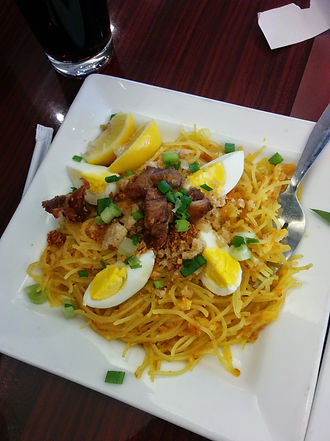





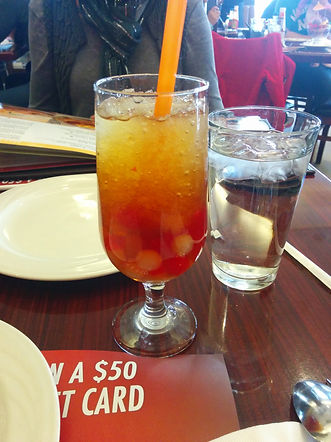
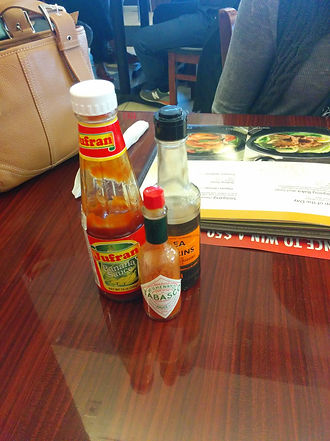
Condiments including the popular banana sauce
Sago't Gulaman (Tapioca and Gelatin) drink
Pancit Palabok - "thick rice noodles in a delicious shrimp, squid and ground pork sauce, garnished with garlic bits, ground pork cracklings, green onions and sliced boiled egg."
Sinangag (garlic fried rice)
Max's popular fried chicken dish served with fries
Lumpiang Ubod - a heart of palm egg roll with vegetables, pork, shrimp and crabmeat in a crepe wrapper with a vinegar garlic dip.
Halo-halo ("mix-mix") served in a bowl, which is how it is typically served in the Philippines.
"A mixture fruit preserves, beans, and milk in shaved ice. Topped with a delicious scoop of Ube (purple yam) ice cream and rice flakes."
On the right is how it looks once everything is mixed, as per its name.
Although the food presentation was appealing with touches of an orange slice and banana leaf (used as a garnish in many Filipino dishes) and reminscent of the homeland, I found the taste to be bland and the texture dry in comparison to the dishes at Remely's or even Lamesa. Thus, it did not have that "homestyle" quality since that is usually much more flavourful, as how it would be made at home. However, considering the breadth of the menu and the fact that we only tried a couple of items, this may not be true for the other items on the menu. After all, the restaurant was 3/4 full and everyone seemed to be enjoying their food.
However, I really did enjoy the Halo-halo. The presentation was very reminiscent of the Philippines and how the dessert is served there. It was very delicious and our favourite part of our meal.
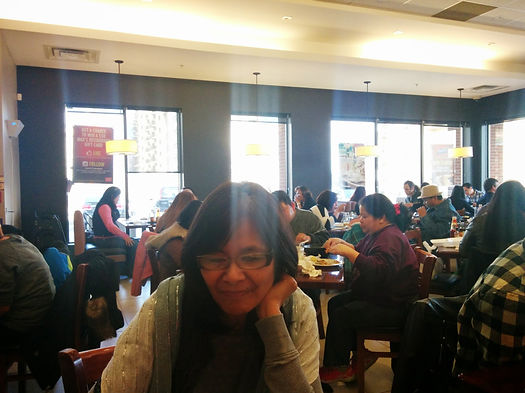

The staff were very friendly and all in uniform. We went at around 5pm on Sunday, and the restaurant was already 3/4 full, filling up more as time passed. Immediately, I noticed the crowd was predominantly Filipino, and mostly families. There was one Caucasian man dining alone, and a few non-Filipinos mixed in with the families. There was also one female Caucasian server while the rest were Filipino. They were playing a mixture of Filipino and Western music, and the overall atmosphere was very family-friendly and relaxed.
Max's advertises itself as the "Cuisine of the Philippines", and it had so many Filipino dishes on its menu that I wouldn't argue with that claim. I would assume that it's also a big reason why Filipinos go there to eat, because they can find so many of their favourite dishes.
According to Polvorosa (2012),
"Favourite Philippine brands and cuisine are familiar reminders of home. They also bring nostalgia because one is reminded of being 'abroad,' since these products are not generally conveniently accessible daily. The presence of Filipino business can signal the idea that one has not really left all of 'home.' For example, Filipino new arrivals to Toronto are often pleasantly surprised to find Filipino stores with appearance and decor replicating those found in the homeland and encountering many Filipinos in the immediate neighbourhood." (p. 193)
This replication of appearance and decor is evident in Max's, which may contribute to a feeling of nostalgia that may attract Filipino customers. However, when I asked my mom if she felt nostalgic being in the restaurant, she said "no". She felt that the atmosphere was different than the ones she used to go to in the Philippines, that the menu was different, and the food not as good. It almost felt like a different restaurant to her. This may be because she emigrated from the Philippines almost 26 years ago, so it wouldn't be surprising that things have changed. Perhaps the above quote is more relevant for recent immigrants.
On the wall is a large picture of the original menu from the restaurant when it was first established in 1945 after World War II. This was a pleasant sight, as it gives the customer some visual history that they can look at while they enjoy their meal.
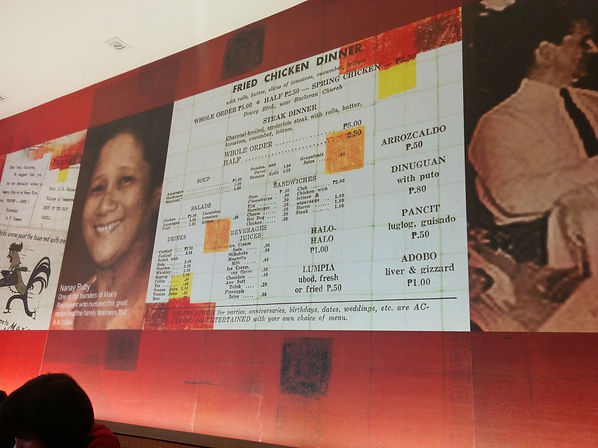
In addition to the main dining space, there are two party rooms, the "Maximo Room" and the "Ruby Room", named after the founders. Evidently, this restaurant is frequented often and I can clearly see why. It is family-oriented and welcoming, and offers so many popular Filipino dishes that can be hard to make at home. Max's is a place where you can enjoy your favourite Filipino dishes with your friends or family, and feel as if you are back in the Philippines at the same time.


© 2015 by Angelica A. Created with Wix.com